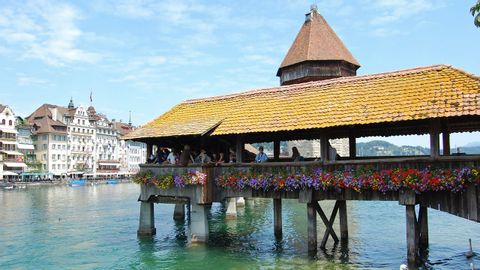瑞士的偉大城市 (Switzerland's Great Cities)
Jane 發佈於 2021 年 01 月 14 日  沒有此條件下的單字
沒有此條件下的單字- n.體格;體型;建造過程;版本
- v.t.建立;建造;發展;建立關係
- v.i.(天氣)增強
US /ˈkʌntri/
・
UK /ˈkʌntri/
- n. (c./u.)國;農村地區;國民;領土;鄉村音樂
- adj.鄉村的;國家的
- v.t.指導(某人);引導;嚮導;指引
- n. (c./u.)指南;導遊;導向裝置
US /ˈsɛntʃəri/
・
UK /'sentʃərɪ/
- n. (c./u.)百年;世紀;(板球)一百分;(羅馬軍隊)百人隊

